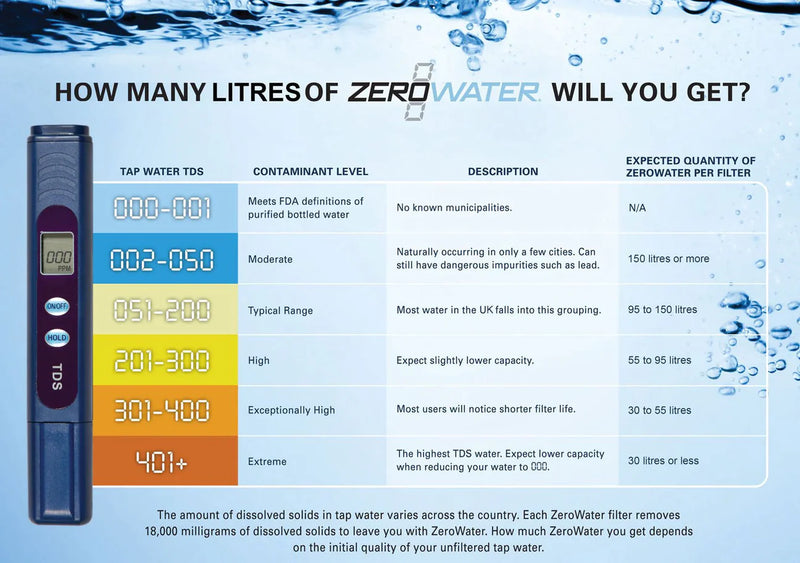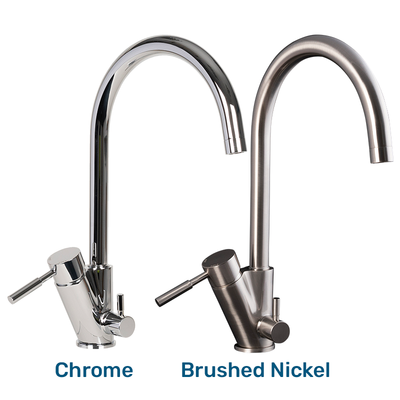ZeroWater 2.3L (10 Cup) Jug
- Description
- Technical Specifications
- Reviews
ZeroWater's 10-cup Ready-Pour™ water filter jug is the first in its class with a sealed lid and reservoir. This allows easy pouring of water that has been filtered without spilling water that is still in the reservoir meaning a further two cups capacity can be added to the existing 8-cup design.
The 10-cup Ready-Pour™ uses the patented ZeroWater filtration system, which combines FIVE sophisticated technologies that work together to remove virtually all dissolved solids from your water. The result is great-tasting water, straight from the tap, and the only pour-through filter pitcher on the market that’s certified by the NSF to reduce lead.
Moreover, it reduces 99% of all Fluoride from your water.
ZeroWater's first layer of filtration, activated carbon and oxidation reduction alloy, removes the chlorine taste you are accustomed to with tap water. The Ion Exchange stage removes virtually all dissolved solids that may be left over from public water systems or even leached into your water from piping, such as aluminium, lead, zinc, nitrates, and more. Three additional stages are included to remove other contaminants and ensure your water receives the appropriate amount of treatment time to deliver water that has virtually zero dissolved solids.
Dimensions (L x W x H): 26 x 14 x 28 cm
ZEROWATER 5-STAGE DUAL ION-EXCHANGE FILTER FEATURES:
- Certified* to reduce Lead and Chromium
- Premium 5-Stage Dual-Ion Exchange filtration system
- Ion-Exchange system that removes virtually all dissolved solids in your water
- The FDA requires the TDS level in PURIFIED bottled water to reach 000-010ppm. ZeroWater is the only filter in its class to achieve this level.
NOTES:
* Filtered potable tap water tested by an independent lab (not the FDA) to meet specifically the water quality requirements for using the label purified. Compared to water produced by leading gravity fed filters.
| Manufacturer Warranty | 1 Year |

How Many Litres of Zerowater will you get?
Use this handy chart to see what filter usage you can expect by the amount of water used and the contaminant level of your drinking water.













